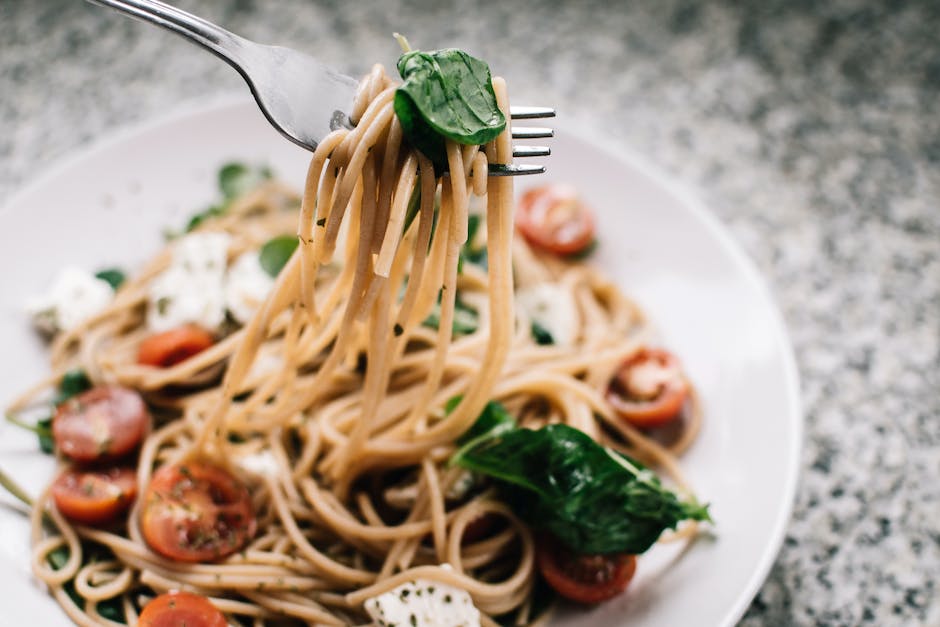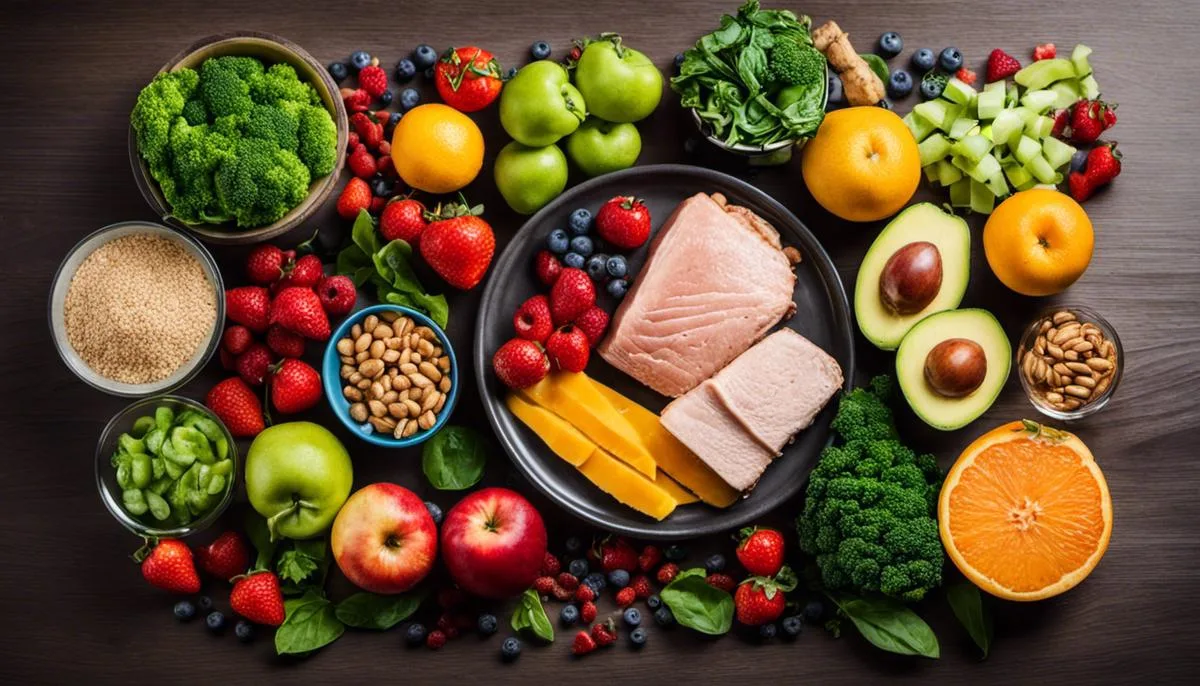Nutrition and weight loss are not simply about counting calories or following fad diets, they require a deep understanding of the principles of nutrition and the role of different nutrients in our body. This involves gaining knowledge about the significance of macronutrients like proteins, carbohydrates, and fats; and micronutrients like vitamins and minerals, and how to maintain their equilibrium in our meals. Grasping the concept of a caloric deficit and its relevance to weight loss, coupled with the knowledge of how to create a healthy caloric deficit, are equally crucial. This discussion goes deeper to explain the nuts and bolts of meal planning and preparation, shedding light on cooking healthy, tasty meals that promote weight loss. Ultimately, the goal is not just about losing weight, but embracing sustainable eating habits that can be incorporated into everyday life and prevent the vicious cycle of ‘yo-yo dieting’.
Understanding Basic Nutrition
Understanding Basic Nutrition
When planning healthy meals for weight loss, understanding basic nutrition concepts can play a vital role. These principles provide the foundation for nourishing our bodies and achieving a healthier weight.
Macronutrients: Proteins, Carbohydrates, and Fats
Macronutrients are the nutrients your body needs in larger amounts. They include proteins, carbohydrates, and fats, all which serve specific functions in maintaining overall bodily functions.
Proteins are fundamental to every cell. They act as building blocks for bones, muscles, skin, and blood. Consuming adequate protein can also help manage weight, as it aids in satiety, or feeling satisfied after meals.
Carbohydrates are the primary source of energy for the body. The key is to choose complex carbohydrates, such as whole grains, legumes, and fibrous fruits and vegetables, rather than refined and processed carbohydrates that can lead to weight gain and other health problems.
Fats are another vital nutrient necessary for various bodily functions like hormone production and vitamin absorption. Unsaturated fats are considered beneficial fats and include monounsaturated and polyunsaturated fats, found in foods such as avocados, nuts, seeds, and fatty fish. In contrast, trans fats and saturated fats can lead to weight gain and increase the risk of heart disease.
Micronutrients: Vitamins and Minerals
Micronutrients are essential nutrients the body needs in smaller amounts. They’re made up of vitamins and minerals, though small in quantity, are critical for maintaining good health.
Different vitamins and minerals have different roles in the body – from bone strength to immune function to brain development. They can be found in a diverse range of foods. For example, calcium for bone health is abundant in dairy products, whereas vitamin C for immunity can be found in citrus fruits.
Balancing Macronutrients and Micronutrients in Your Meals
A key to healthy weight loss is balancing these macronutrients and micronutrients in your meals. As a general rule, your plate should be half vegetables, a quarter whole grains (carbohydrates), and a quarter lean protein. Fats should come from healthy sources and be used sparingly.
Importantly, all of these guidelines are subject to individual variables such as age, activity level, and overall health status. Therefore, while these principles offer a basic understanding, professional guidance is recommended to cater to specific dietary needs and goals.
While focusing on nutrient balance, don’t forget to pay attention to portion size as well. Consuming portions beyond what your body needs, even of healthy foods, can still lead to weight gain. Lastly, remember that nutrition is just one piece of a healthy lifestyle. Regular physical activity, adequate sleep, stress management, and other lifestyle factors also play a significant role in maintaining optimal health and managing weight.

Caloric Deficit and Weight Loss
Understanding Caloric Deficit in Weight Loss
A caloric deficit is a particular state that arises when you consume fewer calories than you burn within a day. This difference in kilocalories, generally known as calories in common conversations, creates a deficit that can lead to weight loss. Understandably, your body needs to compensate for this lack of energy and does so by burning existing fat stores, thus triggering weight loss.
Why is Caloric Deficit Important for Weight Loss?
The importance of a caloric deficit in weight loss cannot be understated. It is fundamentally the bedrock upon which the process operates. If you consistently eat more calories than your body burns, the excess calories are stored as fat. Naturally, the converse holds true; when you ingest fewer calories than your body utilizes, you trigger weight loss. Simply put, no matter how healthy your meal plan might be, if you’re still eating beyond your body’s energy needs, weight loss will be an uphill struggle.
Creating a Healthy Caloric Deficit
Creating a healthy caloric deficit does not mean starving yourself. A gradual, sustainable approach is key. To begin with, clean up your diet by opting for whole foods such as fruits, vegetables, lean proteins, and whole grains while eliminating processed food and sugar. Then, introduce regular physical activity into your routine. Combining a healthy diet with regular physical activity will increase your caloric expenditure without depriving you of essential nutrients and energy.
Calculating Daily Caloric Expenditure and Needs
Calculating your caloric expenditure is fundamental to figuring out how to create a healthy caloric deficit. Start by determining your Basal Metabolic Rate (BMR), which is the number of calories your body needs to function at complete rest. There are several BMR calculators available online that can do this.
Next, consider your level of physical activity, something often referred to as the Physical Activity Level (PAL). For example, you could be sedentary (little to no exercise), considerably active (light exercise/sports 1-3 days/week), or very active (hard exercise/sports 6-7 days a week).
Now, multiply your BMR by your PAL. For instance, if your BMR is 1500 calories and you live an active lifestyle, your total daily caloric expenditure might be around 2250 calories.
To create a caloric deficit that yields weight loss of about a pound a week, consume 500 calories less per day than your total daily expenditure, which in this scenario means taking around 1750 calories a day. However, remember these values can vary greatly depending on a multitude of factors like age, sex, weight, height, and metabolic health.

Planning and Preparing Healthy Meals
Understanding the Importance of Meal Planning
Meal planning is a process of determining what meals to prepare over a certain period, usually a week or month. It involves selecting recipes, deciding on portions, and gathering ingredients in advance. It is an essential part of a weight loss plan as it helps in controlling the quantity and quality of food consumed.
Meal planning helps in reducing the risk of overeating or resorting to unhealthy food options when you’re short on time. It also ensures you get a variety of nutrients from different foods each day.
Implementing Meal Prep Techniques
Once you have a meal plan, it’s time to start meal prepping. Meal prepping involves creating individual servings of meals in advance so they’re ready to eat when it’s meal time. This is a great way to ensure you’re eating healthy, portion-controlled meals regularly.
To start meal prepping, designate one or two days a week to prepare meals. Double or triple recipes and store them in the fridge or freezer for later in the week. Be sure to use airtight containers to maintain hygiene and freshness.
Choosing Healthy Recipes
In selecting recipes for meal prep, consider foods rich in lean proteins, and whole grains. These are essential for energy, satiety, and overall health, especially if weight loss is your goal.
Avoid foods high in sodium, sugar, and unhealthy fats. Instead opt for recipes with fruits and vegetables, lean meats, plant-based proteins, and whole grains. These nutrients will help you feel fuller, longer.
Preparing Delicious, Low-Calorie Dinners
For dinner, you want a meal that’s satisfying but won’t weigh you down. Consider dishes like grilled fish with quinoa and steamed vegetables, turkey lettuce wraps, or a hearty mushroom and spinach stir-fry. These meals are not only packed with nutrients but will also keep your caloric intake in check.
Experimenting with Salad Combinations
Salads can be a great way to consume a variety of fruits and vegetables. Start with a base of leafy greens like spinach or kale, then add lean proteins such as chicken or tofu. Include a serving of complex carbohydrates like quinoa or sweet potatoes, and top with a light dressing.
Keeping Healthy Snacks on Hand
Healthy snacks are an important part of a weight loss strategy. They keep your metabolism running and prevent overeating at meals. Opt for options like Greek yogurt with fruit, nuts and seeds, or hummus with vegetable sticks.
Staying Hydrated
Drinking plenty of water is imperative for weight loss as well. Water aids in digestion, helps to keep you feeling full, and replaces other high-calorie drinks. Aim for around eight 8-ounce glasses of fluid a day, or more if you are physically active.
Conclusion
Learning to master the art of meal planning and preparation involves time and effort, but the returns in terms of weight management and overall health make it worthwhile. Remember, the goal is to nourish your body with the right nutrients, not to deprive it. With the right planning, you can enjoy delicious, healthy meals that assist your weight loss journey.

Photo by stilclassis on Unsplash
Sustainable Eating Habits
Understanding Sustainable Eating Habits For Weight Loss
In the world of dieting and weight loss, quick fixes promising rapid results often fail to take into account long-term sustainability. Rather than bouncing between diets, known as ‘yo-yo dieting’, a healthier and more promising approach is adopting sustainable eating habits. To achieve lasting weight loss via a sustainable diet, eat nutrient-dense foods, seep yourself satisfied and curb between-meal munching, and consider a diet based on your individual nutritional needs, lifestyle, and food preferences.
Turning Healthy Eating Into a Lifestyle Choice
Designing a healthy eating pattern doesn’t have to be complicated. Start by prioritizing whole, minimally-processed foods like fruits, vegetables, lean proteins, and whole grains, which are high in nutrients and likely lower in calories. Portion control is also essential for managing your caloric intake, even with healthy foods. Instead of trying to avoid certain food groups or restrict calories drastically, focus on incorporating a variety of foods that offer different nutrients. Over time, these habits tend to lead to a healthier body weight and less risk of disease.
Dealing With Events and Holidays
One of the most significant obstacles in maintaining a healthy diet is events, holidays, or other special occasions that revolve around food. Before attending an event, eat a light snack to curb your appetite and prevent overeating. When you’re at the event, try to fill your plate with mostly veggies, lean proteins, and other low-calorie options. If there are higher-calorie foods you want to try, serve yourself tiny portions to savor. Finally, try to avoid mindless eating and focus on enjoying the company and the experience more than the food.
Eating Out and Weight Loss Goals
Eating out does not have to jeopardize your weight-loss goals. Choose restaurants that offer healthy options and aren’t afraid to ask for substitutions or modifications to make a dish healthier. Smaller portions, sharing dishes, and foregoing high-calorie beverages can also help maintain your diet when dining out. As always, mindful eating is vital in these settings. Paying attention to your hunger cues and eating slowly can help prevent overeating in a restaurant setting.
Conclusion
In the end, sustaining healthy eating habits is about balance, not extremes. It’s alright to indulge occasionally; what matters is your overall dietary pattern. By making healthier choices, managing your portion sizes, and developing strategies for eating in different situations, you can build a sustainable diet that supports long-term weight loss and overall health.

When women understand the nutritional fundamentals and embrace a healthy, balanced diet, the results can be life-changing in terms of weight loss and overall health improvement. A well-thought-out meal plan, combined with practical preparation tips, can make meals enjoyable and health-enhancing, without making it a chore. Equipped with the knowledge of calorie counts and the scalability to adapt the plan according to individual characteristics, one can chart a weight loss journey that is both productive and pleasurable. Moreover, forging sustainable eating habits that can stand the test of time and circumstance, avoiding weight fluctuations, is key to securing this healthier lifestyle. Hence, nutrition and weight loss are not just about losing but learning how to win at making healthful choices, overcoming the fears of ‘yo-yo dieting’ and treating oneself to the joy of well-balanced, delectable meals.
Thank you for reading this post, don't forget to subscribe to our free newsletter
!
